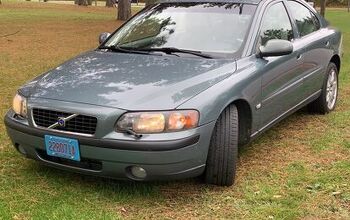The 2018 E-Pace Drinks More Than Its Bigger Brother

Just to clear things up right off the bat, Jaguar’s newest model, the E-Pace, is not the brand’s upcoming electric sport crossover. That’s the I-Pace. Because “I” stands for … ions, we presume.
No, the E-pace is the smaller answer to Jag customers looking for something less than an F-Pace, but not too much less. Riding on the Range Rover Evoque platform, the E-Pace boasts less overhang and a shorter overall length, while retaining the styling cues and handling of its popular larger sibling. However, despite being smaller in most dimensions, there’s one area where it actually tops the F-Pace: in consumption of fuel.
The Environmental Protection Agency has released fuel economy ratings for one of the 2018 E-Pace’s two configurations — this one the higher output 2.0-liter turbocharged four-cylinder seen on higher-trim models. It’s good for 296 horsepower and 295 lb-ft of torque sent to all four wheels.
The combined rating bestowed on the hotter E-Pace is 23 miles per gallon. In the city, this E-Pace can expect to return 21 mpg, and 27 mpg on the highway.
However, buyers of a 2018 F-Pace equipped with the same engine can expect 24 mpg combined, helped along by a higher city rating of 22 mpg. Highway mileage is the same. Smaller to the eye doesn’t necessarily mean thriftier at the pumps — we saw this recently with the Nissan Rogue’s little brother, the Rogue Sport (Qashqai in Canada).
On the surface, the E-Pace’s ZF nine-speed automatic transmission, coupled by its smaller size, would seem to give it an advantage. However, the E-Pace, when equipped with the 296 hp engine, actually outweighs the F-Pace by 130 pounds. Its transmission also has a higher final drive ratio than its eight-speed sibling.
Still, a single MPG isn’t likely to muss anyone’s hair, as the E-Pace’s main job is to provide a lower entry point to Jag’s utility lineup. For $39,595 after delivery, the new SUV’s base MSRP is meaningfully lower than the $43,060 F-Pace. Base models of both vehicles make do with a 2.0-liter making 246 hp in the E-Pace, 247 hp in the F-Pace, and 269 lb-ft in both.
[Image: Jaguar Land Rover]

More by Steph Willems
Latest Car Reviews
Read moreLatest Product Reviews
Read moreRecent Comments
- Lichtronamo Watch as the non-us based automakers shift more production to Mexico in the future.
- 28-Cars-Later " Electrek recently dug around in Tesla’s online parts catalog and found that the windshield costs a whopping $1,900 to replace.To be fair, that’s around what a Mercedes S-Class or Rivian windshield costs, but the Tesla’s glass is unique because of its shape. It’s also worth noting that most insurance plans have glass replacement options that can make the repair a low- or zero-cost issue. "Now I understand why my insurance is so high despite no claims for years and about 7,500 annual miles between three cars.
- AMcA My theory is that that when the Big 3 gave away the store to the UAW in the last contract, there was a side deal in which the UAW promised to go after the non-organized transplant plants. Even the UAW understands that if the wage differential gets too high it's gonna kill the golden goose.
- MKizzy Why else does range matter? Because in the EV advocate's dream scenario of a post-ICE future, the average multi-car household will find itself with more EVs in their garages and driveways than places to plug them in or the capacity to charge then all at once without significant electrical upgrades. Unless each vehicle has enough range to allow for multiple days without plugging in, fighting over charging access in multi-EV households will be right up there with finances for causes of domestic strife.
- 28-Cars-Later WSJ blurb in Think or Swim:Workers at Volkswagen's Tennessee factory voted to join the United Auto Workers, marking a historic win for the 89- year-old union that is seeking to expand where it has struggled before, with foreign-owned factories in the South.The vote is a breakthrough for the UAW, whose membership has shrunk by about three-quarters since the 1970s, to less than 400,000 workers last year.UAW leaders have hitched their growth ambitions to organizing nonunion auto factories, many of which are in southern states where the Detroit-based labor group has failed several times and antiunion sentiment abounds."People are ready for change," said Kelcey Smith, 48, who has worked in the VW plant's paint shop for about a year, after leaving his job at an Amazon.com warehouse in town. "We look forward to making history and bringing change throughout the entire South." ...Start the clock on a Chattanooga shutdown.


































Comments
Join the conversation
I-Pace, E-Pace, sounds confusing. What about P-Face? Now there's a badge you won't forget lightly. ;-)
This thing wont sell well, maybe even worse than the e-pace; its too expensive, too badly proportioned and does not have good engine options...